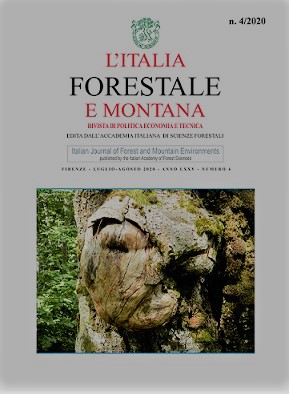Published 2020-09-21
Keywords
- Basilicata,
- forest planning,
- statistical analysis,
- forest fires,
- territory
Copyright (c) 2020 Italian Journal of Forest and Mountain Environments

This work is licensed under a Creative Commons Attribution-NonCommercial 4.0 International License.
Abstract
This work has the purpose to define current level of Basilicata Region’s forest management planning (PAF) and to collect different data concerning to municipal agro-silvo-pastoral properties, administrated until today, and about the planning level reached.
In order to allow a correct comparison about different forest populations, the acquired data have been aggregated into homogeneous categories. According to PAF information in this paper are listed: working circle types, main forest system used type, main and dominant species and age-class distribution. Data analysis were based on a comparative analysis about of spatial impact of managed areas if related to analyzed factors, in order to evaluate the areal distribution of collected information.
In both provinces (Potenza and Matera), according to data analysis, the working circles that appear to be more frequent have productive and protective functions, while the most extensive type of management forms is high forest system. The comparison between tree factors like main species, managed area and provinces show that in Matera Province the dominant species is the Turkey oak (Quercus cerris L.); instead beech (Fagus sylvatica L.) is the most widespread one in province of Potenza. Moreover Quercus is the most represented genus on the regional territory, if you add mixed oak woods to the Turkey oak. Age-class distribution is an another factor which make a difference between Potenza and Matera provinces: while in Matera is easier to found young forests, uneven-aged management is typical of Potenza’s area, and in both cases we found high forest system. The connection between main species and forest system show us that simple coppice system is typical of mixed oak woods instead beech or Turkey oak pure stand are previously managed as high forest system. In a large quantity of cases, Basilicata Regions coppices are however aged, as shown by the age-class distribution analysis. Finally this work try to understand the relationship between forest management and forest fires.

